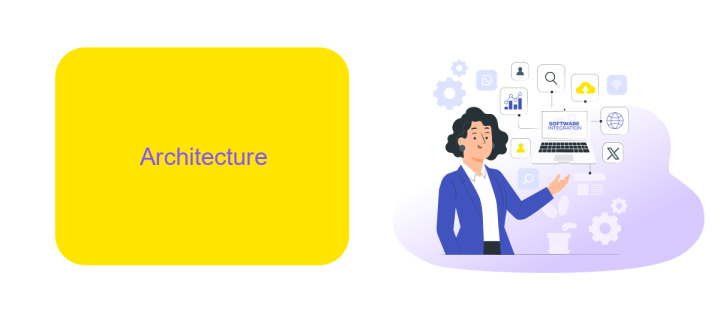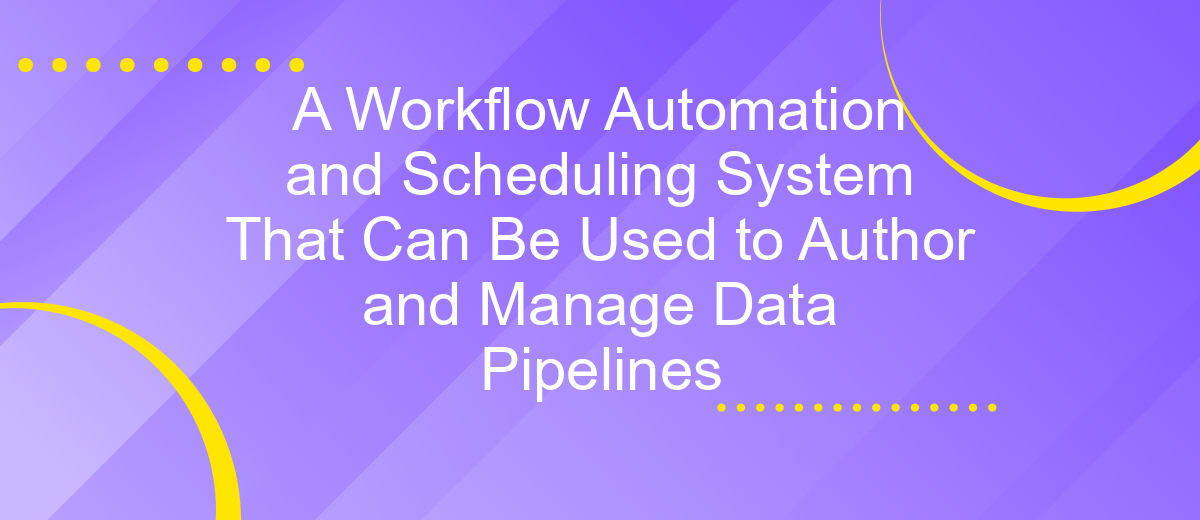A Workflow Automation and Scheduling System That Can Be Used to Author and Manage Data Pipelines
In today's data-driven world, efficiently managing and automating workflows is crucial for businesses aiming to stay competitive. A robust Workflow Automation and Scheduling System offers a seamless solution to author and manage data pipelines, streamlining processes and enhancing productivity. This article explores the key features and benefits of such a system, demonstrating how it can transform data management practices.
Introduction
In the age of big data, organizations are increasingly relying on robust systems to efficiently manage and automate their data workflows. A workflow automation and scheduling system plays a crucial role in streamlining the creation and management of data pipelines, ensuring that data is processed and analyzed in a timely and accurate manner. Such a system not only saves time but also reduces the risk of human error, enabling data professionals to focus on more strategic tasks.
- Automates repetitive tasks, reducing manual intervention.
- Enhances data accuracy and reliability through consistent processes.
- Facilitates seamless integration with various data sources and tools.
- Improves scalability and flexibility of data operations.
- Enables real-time monitoring and troubleshooting.
One notable tool in this domain is ApiX-Drive, which offers extensive capabilities for setting up integrations and automating data workflows. By leveraging such tools, organizations can ensure that their data pipelines are not only efficient but also adaptable to evolving business needs. Ultimately, a well-designed workflow automation and scheduling system is indispensable for any organization aiming to harness the full potential of its data assets.
Architecture

The architecture of our workflow automation and scheduling system is designed to be modular and scalable, ensuring seamless integration with various data sources and processing tools. At its core, the system utilizes a microservices-based approach, where each component is independently deployable and can be scaled based on demand. The data pipelines are authored using a user-friendly interface that allows for drag-and-drop functionality, making it accessible for users with different technical backgrounds. The orchestration layer manages the execution of these pipelines, ensuring that tasks are executed in the correct sequence and handling any dependencies that may arise.
To facilitate integration with external services and data sources, our system leverages the capabilities of ApiX-Drive. This service simplifies the process of connecting to various APIs, databases, and third-party applications, enabling seamless data flow between different platforms. ApiX-Drive's intuitive interface and robust integration options allow users to quickly set up connections without the need for extensive coding knowledge. This integration capability ensures that our workflow automation system can easily adapt to the evolving needs of businesses, providing a flexible and efficient solution for managing complex data pipelines.
Use Cases

The workflow automation and scheduling system is versatile, catering to various industries and use cases. It simplifies the process of authoring and managing data pipelines, making it an invaluable tool for data engineers and analysts.
- Data Integration: Seamlessly integrate data from multiple sources using ApiX-Drive, which offers a wide range of connectors for databases, cloud services, and APIs.
- ETL Processes: Design, schedule, and monitor Extract, Transform, Load (ETL) workflows to ensure data is consistently updated and accurate.
- Business Intelligence: Automate data pipelines to feed BI tools, enabling real-time analytics and reporting.
- Data Warehousing: Manage data ingestion and transformation processes to maintain a robust data warehouse.
- Machine Learning: Streamline the preparation and scheduling of data for machine learning models, ensuring timely and accurate results.
By leveraging this system, organizations can enhance their data management capabilities, reduce manual intervention, and ensure data accuracy. The integration with ApiX-Drive further simplifies the process, making it easier to connect disparate data sources and automate workflows.
Benefits

Implementing a workflow automation and scheduling system for authoring and managing data pipelines offers numerous advantages. One of the primary benefits is the significant reduction in manual effort required to handle complex data workflows. This automation not only saves time but also minimizes the risk of human errors, ensuring more reliable and accurate data processing.
Another key benefit is the enhanced scalability and flexibility that such systems provide. As data volumes grow and business requirements evolve, a well-designed automation system can easily adapt to these changes, allowing organizations to maintain efficiency and performance without needing extensive reconfiguration.
- Streamlined data processing and reduced manual intervention
- Improved accuracy and reliability of data pipelines
- Scalable solutions that grow with your data needs
- Enhanced flexibility to adapt to changing business requirements
Additionally, integrating with platforms like ApiX-Drive can further enhance the capabilities of your workflow automation system. ApiX-Drive enables seamless integration with various applications and services, allowing for more cohesive and efficient data management. This integration capability ensures that your data pipelines are not only automated but also interconnected, providing a comprehensive solution for modern data challenges.


Conclusion
The implementation of a workflow automation and scheduling system for managing data pipelines significantly enhances operational efficiency and accuracy. By enabling seamless integration and automation, organizations can streamline their data processes, reduce manual intervention, and minimize errors. This system not only supports the creation and management of complex data workflows but also ensures timely execution and monitoring, providing a robust solution for data-driven decision-making.
Moreover, leveraging services like ApiX-Drive can further optimize integration processes, allowing for easy connectivity between various applications and data sources. Such integrations facilitate real-time data synchronization and improve the overall agility of the data pipeline. As a result, businesses can respond more swiftly to changing data requirements and maintain a competitive edge in their respective industries. The adoption of these advanced systems and tools marks a pivotal step towards achieving a more efficient and responsive data management strategy.
FAQ
What is a workflow automation and scheduling system for data pipelines?
How can I author and manage data pipelines using this system?
What are the benefits of using a workflow automation and scheduling system for data pipelines?
How can I integrate external services and APIs into my data pipelines?
Is it possible to scale the system as my data processing needs grow?
Apix-Drive is a universal tool that will quickly streamline any workflow, freeing you from routine and possible financial losses. Try ApiX-Drive in action and see how useful it is for you personally. In the meantime, when you are setting up connections between systems, think about where you are investing your free time, because now you will have much more of it.

